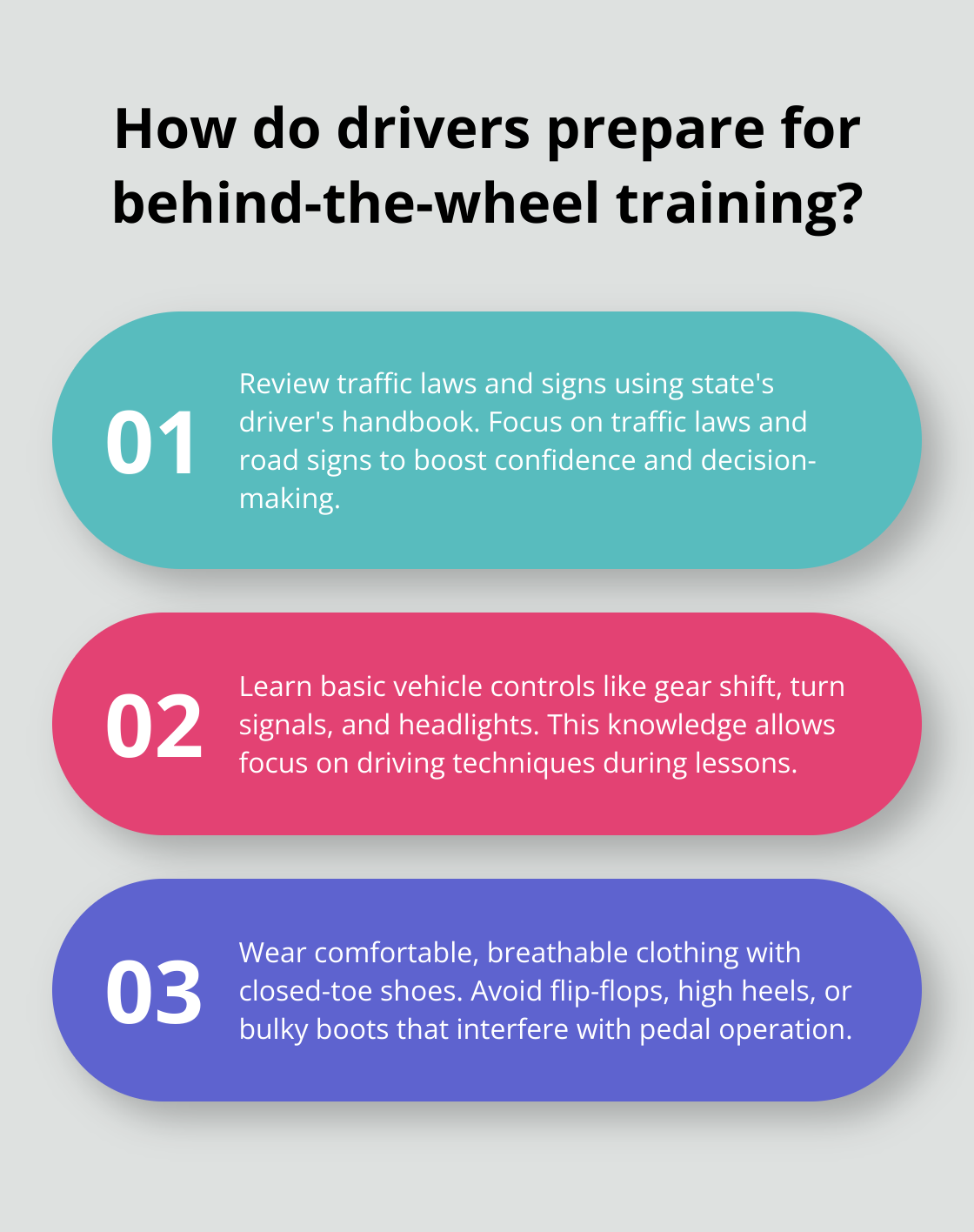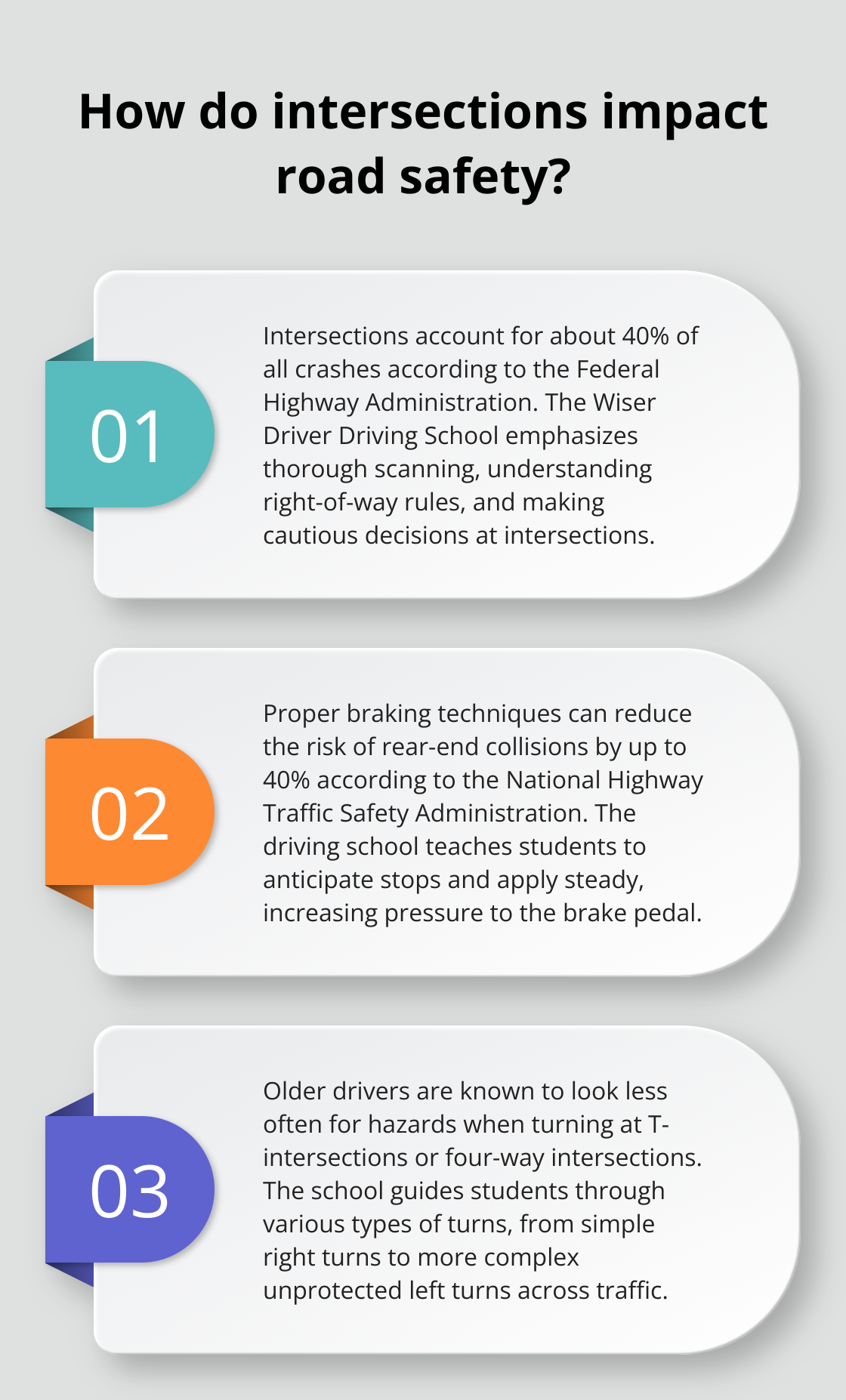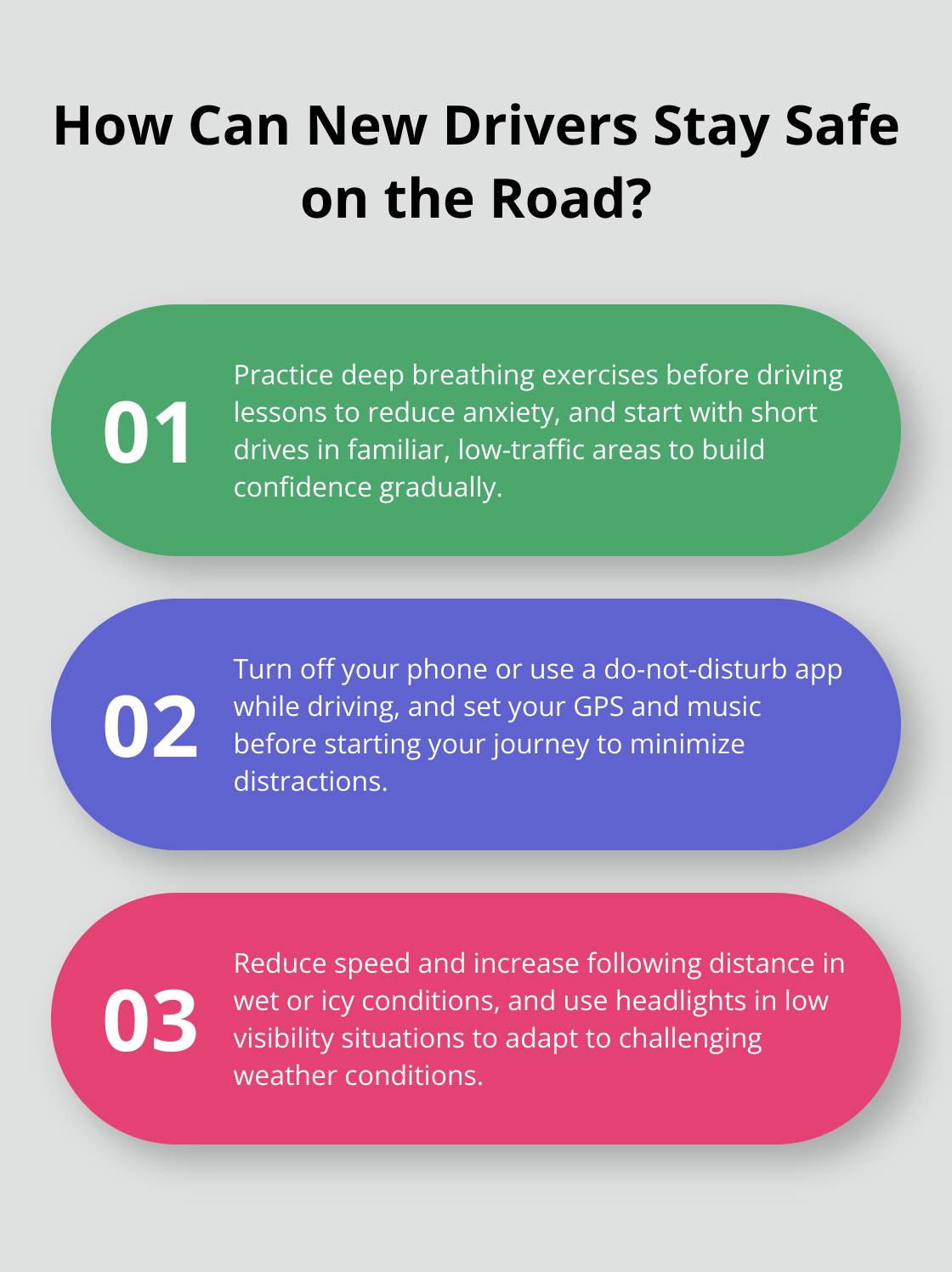How to Succeed in Behind the Wheel Driver Training?
At The Wiser Driver Driving School, we know that behind-the-wheel driver training can be both exciting and nerve-wracking for new drivers. Mastering the skills needed to navigate roads safely is a critical step in becoming a confident driver.
This guide will walk you through essential preparation steps, key skills to focus on, and strategies for overcoming common challenges during your training. With the right mindset and practice, you’ll be well on your way to success behind the wheel.
How to Prepare for Behind-the-Wheel Training
Review Traffic Laws and Signs
Before you sit behind the wheel, take time to study your state’s driver’s handbook. Focus on traffic laws and road signs you’ll encounter during your training. Prepare for your traffic sign test with a complete guide to master essential signs, tips, and resources. This will help you confidently pass and drive safely. Familiarity with these rules will boost your confidence and improve your decision-making on the road.
Get Acquainted with Vehicle Controls
Learn the basic controls of the car you’ll drive. Locate and understand the function of essential features like the gear shift, turn signals, windshield wipers, and headlights. This knowledge will allow you to focus on driving techniques rather than search for controls during your lesson.
Choose Appropriate Attire
Select comfortable, breathable clothing that allows easy movement. Wear closed-toe shoes with thin, flat soles to maximize pedal feel. Avoid flip-flops, high heels, or bulky boots (these can interfere with proper pedal operation).
Collect Necessary Documents and Accessories
Gather all required documents, such as your learner’s permit and any necessary forms from your driving school. If you use glasses or contact lenses, bring them along.
Prepare Mentally
Arrive at your training session with a positive mindset. Try to visualize successful driving scenarios to build confidence. If you feel anxious, practice deep breathing exercises before your lesson. Deep breathing exercises can help you reduce overall anxiety. It’s suggested to practice these techniques at home to de-stress before driving. A calm and focused state of mind will enhance your learning experience and help you absorb new information more effectively.

These preparatory steps will equip you for effective behind-the-wheel training sessions. As you complete these tasks, you’ll set a strong foundation for the next phase of your journey: mastering key driving skills during your training.
Mastering Essential Driving Skills
At The Wiser Driver Driving School, we focus on developing key skills that form the foundation of safe and confident driving. Our experienced instructors guide students through a series of techniques that are essential for navigating today’s roads effectively.
Steering and Vehicle Control
Proper steering technique is fundamental to safe driving. We teach the push-pull method, which allows for smooth, controlled turns while maintaining a firm grip on the wheel. This technique involves pushing the wheel up with one hand while pulling down with the other, ensuring you’re always in control of your vehicle’s direction.

Our instructors emphasize the importance of looking where you want to go, not just at the road directly in front of the car. This practice, known as visual steering, helps drivers anticipate turns and maintain smoother control of the vehicle.
Smooth Acceleration and Braking
Mastering smooth acceleration and braking is vital for fuel efficiency and passenger comfort. We teach students to apply gentle, steady pressure to the accelerator, gradually increasing speed. For braking, we emphasize the importance of anticipating stops and applying steady, increasing pressure to the brake pedal.
The National Highway Traffic Safety Administration reports that proper braking techniques can reduce the risk of rear-end collisions by up to 40%. We ensure our students understand and practice these life-saving skills.
Safe Lane Changes and Merging
Changing lanes safely requires a combination of awareness, signaling, and smooth execution. We teach the SMOG technique: Signal, Mirrors, Over-the-shoulder, Go/Glide. This systematic approach ensures drivers check all blind spots before making a move.
For merging (especially onto highways), we stress the importance of matching the speed of traffic and finding an appropriate gap. Our instructors provide hands-on practice in various traffic conditions to build confidence in these critical maneuvers.
Navigating Intersections and Turns
Intersections are hotspots for accidents, accounting for about 40% of all crashes (according to the Federal Highway Administration). We emphasize the importance of thorough scanning, understanding right-of-way rules, and making decisive yet cautious decisions.
For turns, we teach proper positioning, speed control, and the use of turn signals. Our instructors guide students through various types of turns, from simple right turns to more complex unprotected left turns across traffic. It’s worth noting that older drivers are known to look less often for hazards when turning at T-intersections or at four way intersections.
Mastering Parking Maneuvers
Parking can be a source of anxiety for many new drivers. We break down parallel parking into easy-to-follow steps, providing ample practice time. Our instructors also cover other essential parking skills like reverse parking and angle parking.
We use reference points and visual guides to help students understand their vehicle’s dimensions, making parking maneuvers more intuitive and less stressful.
These key skills form the foundation of safe driving, but they’re just the beginning. In the next section, we’ll explore how to overcome common challenges that new drivers face during their behind-the-wheel training.
Tackling Common Driving Challenges
Conquering Driving Anxiety
Feeling nervous behind the wheel is common, especially for new drivers. A study by the National Institute of Mental Health found that up to 12.5% of Americans experience driving anxiety. To combat this, we recommend:
- Practice deep breathing exercises before and during your drive.
- Start with short drives in familiar, low-traffic areas to build confidence.
- Use positive self-talk to reinforce your abilities.
- Expose yourself gradually to more challenging driving situations.

Instructors at quality driving schools (like The Wiser Driver) are trained to help students manage anxiety, providing a supportive environment for skill development.
Minimizing Distractions
Distracted driving is a leading cause of accidents. In 2022, 3,308 people were killed in motor vehicle crashes involving distracted drivers. To stay focused:
- Turn off your phone or use a do-not-disturb app while driving.
- Set your GPS and music before starting your journey.
- Avoid eating or drinking while driving.
- Pull over safely first if you need to attend to something.
Quality driving instruction emphasizes the importance of maintaining focus during lessons, helping students develop habits that prioritize safety.
Adapting to Weather Conditions
Different weather conditions require specific driving techniques. Weather-related crashes account for 22% of vehicle crashes. Effective training includes:
- Reduce speed and increase following distance in wet or icy conditions.
- Use headlights in low visibility situations.
- Learn proper use of defrosting and defogging systems.
- Practice techniques for maintaining control on slippery roads.
Hands-on experience in various weather conditions (when possible) ensures students are prepared for whatever Mother Nature throws their way.
Handling Unexpected Situations
The road can be unpredictable, and drivers must be ready to react. The Insurance Institute for Highway Safety reports that quick reaction times can reduce accident rates by up to 50%. Students should learn to:
- Scan the road regularly for potential hazards.
- Maintain a safe following distance to allow reaction time.
- Know how to perform emergency maneuvers (like quick lane changes or sudden stops).
- Stay calm and focused when unexpected events occur.
Through simulated scenarios and real-world practice, students can develop the skills to handle surprises on the road confidently.
Comprehensive driver training (such as that offered by The Wiser Driver Driving School) equips students with the tools they need to become safe, confident drivers in any situation. A thorough approach goes beyond basic skills, preparing drivers for the realities of today’s roads.
Final Thoughts
Behind-the-wheel driver training equips you with essential skills for safe driving. Thorough preparation, mastery of key techniques, and strategies to overcome common challenges form the foundation of your driving journey. Practice will refine your abilities, so approach each lesson with focus and a positive attitude.

Driving skills develop over time, requiring patience and persistence. Each time you sit behind the wheel presents an opportunity to improve your abilities. Stay calm, remain attentive, and embrace the learning process as you progress towards becoming a confident driver.
We at The Wiser Driver Driving School support you throughout your behind-the-wheel training. Our programs aim to boost your driving confidence, regardless of age or experience. From state-required courses to personalized lessons, we provide the tools and guidance needed to navigate today’s roads safely.



